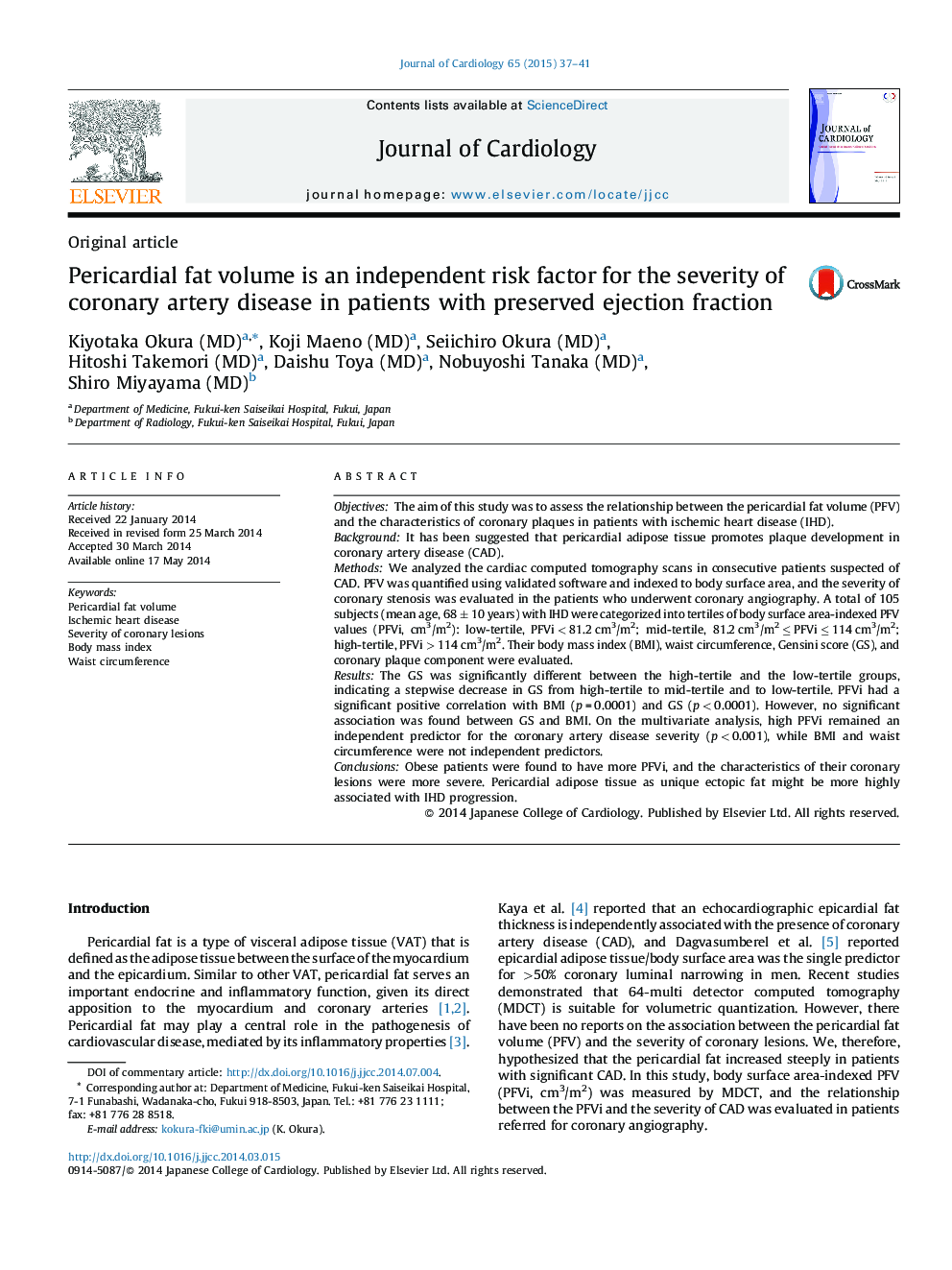| Article ID | Journal | Published Year | Pages | File Type |
|---|---|---|---|---|
| 5984004 | Journal of Cardiology | 2015 | 5 Pages |
ObjectivesThe aim of this study was to assess the relationship between the pericardial fat volume (PFV) and the characteristics of coronary plaques in patients with ischemic heart disease (IHD).BackgroundIt has been suggested that pericardial adipose tissue promotes plaque development in coronary artery disease (CAD).MethodsWe analyzed the cardiac computed tomography scans in consecutive patients suspected of CAD. PFV was quantified using validated software and indexed to body surface area, and the severity of coronary stenosis was evaluated in the patients who underwent coronary angiography. A total of 105 subjects (mean age, 68 ± 10 years) with IHD were categorized into tertiles of body surface area-indexed PFV values (PFVi, cm3/m2): low-tertile, PFVi < 81.2 cm3/m2; mid-tertile, 81.2 cm3/m2 â¤Â PFVi â¤Â 114 cm3/m2; high-tertile, PFVi > 114 cm3/m2. Their body mass index (BMI), waist circumference, Gensini score (GS), and coronary plaque component were evaluated.ResultsThe GS was significantly different between the high-tertile and the low-tertile groups, indicating a stepwise decrease in GS from high-tertile to mid-tertile and to low-tertile. PFVi had a significant positive correlation with BMI (p = 0.0001) and GS (p < 0.0001). However, no significant association was found between GS and BMI. On the multivariate analysis, high PFVi remained an independent predictor for the coronary artery disease severity (p < 0.001), while BMI and waist circumference were not independent predictors.ConclusionsObese patients were found to have more PFVi, and the characteristics of their coronary lesions were more severe. Pericardial adipose tissue as unique ectopic fat might be more highly associated with IHD progression.
